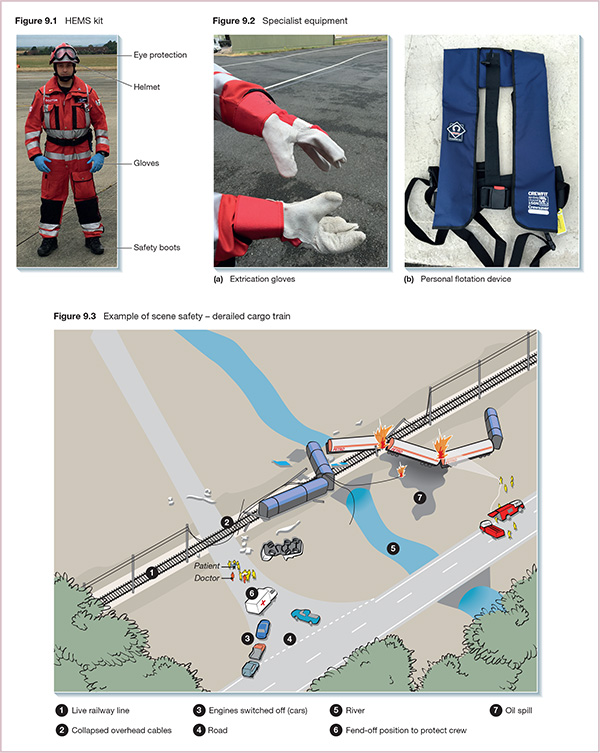9 The mantra at the forefront of the mind of any pre-hospital care practitioner has always been: is it safe to approach? Although scene control is primarily the responsibility of the fire and police crews, it is no help to the casualty or the other rescuers if any harm comes to the medics, and so every practitioner must be personally vigilant for hazards. Always think of your own safety first, then the safety of other rescuers and bystanders, and finally the safety of the patient. This is the 1-2-3 of safety. On arriving at the scene, assess it thoroughly for hazards to your team and to other rescuers. One should communicate with crew members already on the scene to obtain as much information about current and former dangers. If the scene has not yet been made safe, then this should be left to the fire and police crews. It is vital to understand that the scene is a dynamic environment. Factors in scene safety may include the following: cutting of vehicles, movement of power cables, leaking fuel and live rail tracks. What was once judged to be safe may become decidedly – and sometimes unpredictably – unsafe. Assessment of scene safety is a dynamic process. Pre-hospital care practitioners have to be able to work in a diverse range of environments, from the roadside, to water, to areas with chemical or nuclear hazards. As a result, rescuers are exposed to risks from multiple sources, and so require a full range of PPE and the training to use it effectively:
Scene safety

Importance of scene safety
Initial approach and arrival at the scene

Full access? Get Clinical Tree








